
Deutsch-Chinesische Enzyklopädie, 德汉百科
 Thailand
Thailand
 ASEAN Summit
ASEAN Summit
 Association of Southeast Asian Nations,ASEAN
Association of Southeast Asian Nations,ASEAN
 Hassanal Bolkiah
Hassanal Bolkiah
 Association of Southeast Asian Nations,ASEAN
Association of Southeast Asian Nations,ASEAN
 Htin Kyaw
Htin Kyaw
 Association of Southeast Asian Nations,ASEAN
Association of Southeast Asian Nations,ASEAN
 Hun Sen
Hun Sen
 Association of Southeast Asian Nations,ASEAN
Association of Southeast Asian Nations,ASEAN
 Joko Widodo
Joko Widodo
 Association of Southeast Asian Nations,ASEAN
Association of Southeast Asian Nations,ASEAN
 Lee Hsien Loong
Lee Hsien Loong
 Association of Southeast Asian Nations,ASEAN
Association of Southeast Asian Nations,ASEAN
 Najib Razak
Najib Razak
 Association of Southeast Asian Nations,ASEAN
Association of Southeast Asian Nations,ASEAN
 Nguyễn Xuân Phúc
Nguyễn Xuân Phúc
 Association of Southeast Asian Nations,ASEAN
Association of Southeast Asian Nations,ASEAN
 Prayut Chan-o-cha
Prayut Chan-o-cha
 Association of Southeast Asian Nations,ASEAN
Association of Southeast Asian Nations,ASEAN
 Rodrigo Duterte
Rodrigo Duterte
 Association of Southeast Asian Nations,ASEAN
Association of Southeast Asian Nations,ASEAN
 Thongloun Sisoulith
Thongloun Sisoulith
 Brunei Darussalam
Brunei Darussalam
 Indonesien
Indonesien
 Kambodscha
Kambodscha
 Laos
Laos
 Malaysia
Malaysia
 Myanmar
Myanmar

 Parteien und Regierung
Parteien und Regierung

 Parteien und Regierung
Parteien und Regierung
 Association of Southeast Asian Nations,ASEAN
Association of Southeast Asian Nations,ASEAN
 Philippinen
Philippinen
 Singapur
Singapur
 Thailand
Thailand
 Vietnam
Vietnam

 Wichtige internationale Organisationen
Wichtige internationale Organisationen

东南亚国家联盟(英语:Association of Southeast Asian Nations,英文简称ASEAN),中文简称东盟、亚细安、东南亚国协或东协,是集合东南亚区域国家的一个政府性国际组织。[6]
东盟成立初期,基于冷战背景立场反共,主要任务之一为防止区域内共产主义势力扩张,合作侧重在军事安全与政治中立。冷战结束后东南亚各国政经情势趋稳,并接纳越南社会主义共和国和老挝人民民主共和国加入。
Der Verband Südostasiatischer Nationen, kurz ASEAN (deutsche Aussprache: [ˈaːzean]; englische Aussprache [ˈæzɪən],[4] von englisch Association of Southeast Asian Nations), ist eine internationale Organisation südostasiatischer Staaten mit Sitz in Jakarta (Indonesien). Jedes Jahr findet ein Gipfeltreffen der ASEAN-Staaten statt.
Das ursprüngliche Ziel war die Verbesserung der wirtschaftlichen, politischen und sozialen Zusammenarbeit. Später erweiterte sich das Betätigungsfeld um Sicherheits-, Kultur- und Umweltfragen. Im September 2009 beschlossen die Staats- und Regierungschefs der ASEAN-Mitglieder, einen gemeinsamen Wirtschaftsraum nach dem Vorbild der EU zu schaffen.[5]
Im Laufe der Jahre wurden weitere Organisationen gegründet: das ASEAN-Regionalforum (ARF) für Sicherheitsfragen, die ASEAN-Freihandelszone (AFTA) zur Förderung des Handels, die ASEAN Investment Area (AIA) zur Förderung gegenseitiger Direktinvestitionen und andere mehr.
Vorläufer der Organisationsgemeinschaft war der Verband Südostasiens, ASA (1961–1967). Diese erlebte nach einer Stagnationsphase und dem Sturz Sukarnos im September 1965 zwar eine Wiedererweckung, ging aber auf indonesische Initiative hin sowie unter Beibehaltung der Strukturen und des Sicherheitskonzepts schließlich in das intensivere Bündnis der ASEAN über.
東南アジア諸国連合(とうなんアジアしょこく れんごう、英語: Association of South‐East Asian Nations、ASEAN [ˈɑːsi.ɑːn] AH-see-ahn)は、東南アジア10か国の経済、社会、政治、安全保障、文化に関する地域協力機構。本部所在地はインドネシアの首都ジャカルタ。
The Association of Southeast Asian Nations[9] (ASEAN; /ˈɑːsiɑːn/ AH-see-ahn,[10] /ˈɑːziɑːn/ AH-zee-ahn)[11][12] is a regional intergovernmental organization comprising ten countries in Southeast Asia, which promotes intergovernmental cooperation and facilitates economic, political, security, military, educational, and sociocultural integration among its members and other countries in Asia.
ASEAN also regularly engages other countries in the Asia-Pacific region and beyond. A major partner of Shanghai Cooperation Organisation, ASEAN maintains a global network of alliances and dialogue partners and is considered by many as a global powerhouse,[13][14] the central union for cooperation in Asia-Pacific, and a prominent and influential organization. It is involved in numerous international affairs, and hosts diplomatic missions throughout the world.[15][16][17][18]
L’Association des nations de l'Asie du Sud-Est (ANASE ou ASEANa) est une organisation politique, économique et culturelle regroupant dix pays d'Asie du Sud-Est. Elle a été fondée en 1967 à Bangkok (Thaïlande) par cinq pays dans le contexte de la guerre froide pour faire barrage aux mouvements communistes, développer la croissance et le développement et assurer la stabilité dans la région. Aujourd'hui, l'association a pour but de renforcer la coopération et l'assistance mutuelle entre ses membres, d'offrir un espace pour régler les problèmes régionaux et peser en commun dans les négociations internationales. Un sommet est organisé chaque année au mois de novembre. Son secrétariat général est installé à Jakarta (Indonésie).
L'ASEAN (IPA: ˈɑːsiɑːn; in inglese: Association of South-East Asian Nations; in italiano: Associazione delle Nazioni del Sud-est asiatico[6]), è un'organizzazione politica, economica e culturale di nazioni situate nel Sud-est asiatico. È stata fondata nel 1967 con lo scopo principale di promuovere la cooperazione e l'assistenza reciproca fra gli stati membri per accelerare il progresso economico e aumentare la stabilità della regione. Inoltre, l'organizzazione coinvolge regolarmente altri paesi nella regione Asia-Pacifico e oltre. L'ASEAN mantiene una rete globale di alleanze e partner di dialogo ed è considerata da alcuni come una potenza globale e un'organizzazione di spicco e influente.[7][8] È coinvolta in numerosi affari internazionali e ospita missioni diplomatiche in tutto il mondo.[9][10][11][12] È uno dei principali partner dell'Organizzazione per la Cooperazione di Shanghai, con il quale sviluppa un modello di cooperazione per la pace, la stabilità, lo sviluppo e la sostenibilità dell'Asia.[13][14][15][16] Serve anche come modello di riferimento internazionale nella ricerca di armonia e forza tra diversità e differenze, nonché una figura di spicco nell'economia globale, commercio, diplomazia e politica.[17][18][19][20][21][22][23]
La Asociación de Naciones del Sureste Asiático (ASEAN por sus siglas en inglés: Association of Southeast Asian Nations) es una organización intergubernamental de estados del sudeste asiático creada el 8 de agosto de 1967 por cinco países: Tailandia, Indonesia, Malasia, Singapur y Filipinas. En la actualidad está integrada por 10 países de la región del sudeste asiático: Malasia, Indonesia, Brunéi, Vietnam, Camboya, Laos, Myanmar, Singapur, Tailandia y Filipinas.
De acuerdo con el diario digital Expansión (Datos Macro), la habitan unos 646 millones de personas y su PIB anual es de 2,45 billones de euros,2 aunque otras fuentes apuntan a un PIB de 5,7 billones de dólares.3
Los principales objetivos de la ASEAN son: acelerar el crecimiento económico y fomentar la paz y la estabilidad regional. La ASEAN ha establecido un foro conjunto con Japón, sostiene un acuerdo de cooperación con la Unión Europea (UE), y ha iniciado conversaciones para la cooperación comercial oficial con Unión Económica Euroasiática (UEE).4 Su sede principal se encuentra en Yakarta.
Ассоциация государств Юго-Восточной Азии (АSEАN) (англ. Association of South East Asian Nations) — политическая, экономическая и культурная региональная межправительственная организация 10 стран, расположенных в Юго-Восточной Азии. АСЕАН образована 8 августа 1967 года в Бангкоке вместе с подписанием «Декларации АСЕАН», более известной как «Бангкокская декларация». Договорное оформление АСЕАН произошло лишь в 1976 году в подписанных на острове Бали Договоре о дружбе и сотрудничестве в Юго-Восточной Азии и Декларации согласия АСЕАН.
 Asia-Pacific Economic Cooperation,APEC
Asia-Pacific Economic Cooperation,APEC

 Australian Capital Territory-ACT
Australian Capital Territory-ACT
 Australien
Australien
 Beijing Shi-BJ
Beijing Shi-BJ

 British Columbia-BC
British Columbia-BC
 Brunei Darussalam
Brunei Darussalam
 Chile
Chile
 China
China

 Hand in Hand
Hand in Hand

 Hawaii-HI
Hawaii-HI
 Hongkong Tebiexingzhengqu-HK
Hongkong Tebiexingzhengqu-HK
 Indonesien
Indonesien
 Japan
Japan
 Kanada
Kanada
 Kantō
Kantō
 Kinki
Kinki
 Malaysia
Malaysia
 Mexiko
Mexiko
 Neuseeland
Neuseeland

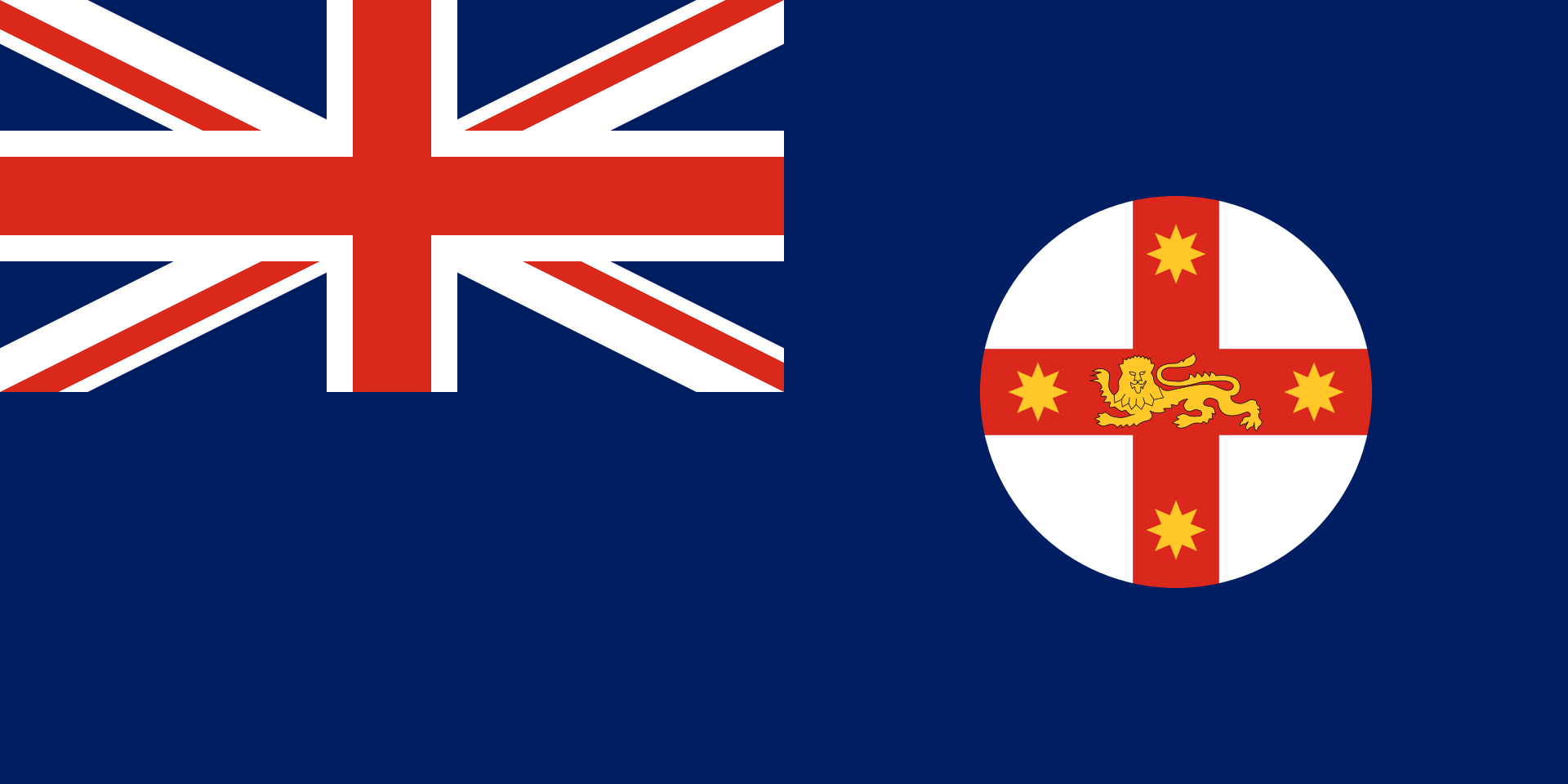 New South Wales-NSW
New South Wales-NSW
 Papua-Neuguinea
Papua-Neuguinea

 Parteien und Regierung
Parteien und Regierung

 Parteien und Regierung
Parteien und Regierung
 Asia-Pacific Economic Cooperation,APEC
Asia-Pacific Economic Cooperation,APEC
 Peru
Peru
 Philippinen
Philippinen
 Republik Korea
Republik Korea
 Russland
Russland
 Shanghai Shi-SH
Shanghai Shi-SH
 Singapur
Singapur
 Taiwan Sheng-TW
Taiwan Sheng-TW
 Thailand
Thailand
 Vereinigte Staaten
Vereinigte Staaten
 Vietnam
Vietnam

 Washington-WA
Washington-WA

 Wichtige internationale Organisationen
Wichtige internationale Organisationen

亚太经济合作组织(简称亚太经合组织;英语:Asia-Pacific Economic Cooperation,缩写:APEC),是亚太区内各地区之间促进经济成长、合作、贸易、投资的论坛。此组织的创办在历史上取代了该区域的冷战结构,但由于日本在该区域会因过去历史记忆引发负面评价,所以由澳大利亚主导创始事项[1]。
始设于1989年,现有21个经济体成员。亚太经合组织是经济合作的论坛平台,其运作是通过非约束性的承诺与成员的自愿,强调开放对话及平等尊重各成员意见,不同于其他经由条约确立的政府间组织。“APEC”与“Asia-Pacific Economic Cooperation”均是亚太经济合作组织的注册商标。[2]
Die Asiatisch-Pazifische Wirtschaftsgemeinschaft (für englisch Asia-Pacific Economic Cooperation, kurz APEC, auch übersetzt als Asiatisch-Pazifische Wirtschaftskooperation oder Asien-Pazifik-Forum) ist eine internationale Organisation, die es sich zum Ziel gesetzt hat, im pazifischen Raum eine Freihandelszone einzurichten.
In den 21 APEC-Staaten lebt knapp die Hälfte der Weltbevölkerung. Der Wirtschaftsraum erbringt mehr als die Hälfte der Weltwirtschaftsleistung und ist eine der am schnellsten wachsenden Wirtschaftsregionen der Welt.
アジア太平洋経済協力会議(アジアたいへいようけいざいきょうりょくかいぎ、英: Asia-Pacific Economic Cooperation)は、環太平洋地域における多国間経済協力を進めるための非公式なフォーラム[2]である。略称、APEC(エイペック[3][4])。
「アジア太平洋」という概念が最初に打ち出されたのは、永野重雄が1967年に発足させた太平洋経済委員会(PBEC)という経済団体の設立時であるとされるが[5][6][7]、具体的にこうした地域概念が政府レベルの協力枠組みに発展する萌芽は、1978年、日本の大平正芳首相が就任演説で「環太平洋連帯構想」を呼びかけたことにある。これを具体化した大平政権の政策研究会「環太平洋連帯研究グループ」(議長:大来佐武郎、幹事佐藤誠三郎)の報告を受け、大平がオーストラリアのマルコム・フレイザー首相に提案して強い賛同を得たことが、1980年9月の太平洋経済協力会議(PECC)の設立につながった。PECCは地域における様々な課題を議論し研究するセミナーといった趣のものであったが、これを土台にして、各国政府が正式に参加する会合として設立されたのが、APECである[8][9]。
APECは、1989年にオーストラリアのホーク首相の提唱で、日本・アメリカ合衆国・カナダ・韓国・オーストラリア・ニュージーランド及び当時の東南アジア諸国連合(ASEAN)加盟6か国の計12か国で発足し、同国のキャンベラで閣僚会議(Ministerial Meeting)を開催した。また、1993年には米国のシアトルで初の首脳会議(Economic Leaders' Meeting)がもたれた。現在は、首脳会議、及び、外相、経済担当相による閣僚会議をそれぞれ年1回開いている。シンガポールに常設事務局を置き、開催国から任期1年で事務局長が選任されている[10]。 参加しているメンバーは、21カ国・地域で、2012年現在、人口では世界の41.4%、GDP(国内総生産)では57.8%、貿易額では47%を占めている。
APECは、開かれた地域協力によって経済のブロック化を抑え、域内の貿易・投資の自由化を通じて、世界貿易機関(WTO)のもとでの多角的自由貿易体制を維持・発展することを目的としてきたが、近年のWTOの新ラウンドの停滞や自由貿易協定締結の動きの活発化などによって、その存在意義が問われている。
Asia-Pacific Economic Cooperation (APEC) is an inter-governmental forum for 21 Pacific Rim member economies[2] that promotes free trade throughout the Asia-Pacific region. Inspired from the success of Association of Southeast Asian Nations (ASEAN)’s series of post-ministerial conferences launched in the mid-1980s, the APEC was established in 1989 in response to the growing interdependence of Asia-Pacific economies and the advent of regional trade blocs in other parts of the world; and to establish new markets for agricultural products and raw materials beyond Europe.[3][4][5] Headquartered in Singapore, the APEC is recognised as one of the oldest forums and highest-level multilateral blocs in the Asia-Pacific region, and exerts a significant global influence.[6][7][8][9][10][11]
An annual APEC Economic Leaders' Meeting is attended by the heads of government of all APEC members except Republic of China (Taiwan) (which is represented by a ministerial-level official under the name Republic of China as economic leader).[12] The location of the meeting rotates annually among the member economies, and a famous tradition, followed for most (but not all) summits, involves the attending leaders dressing in a national costume of the host country. APEC has three official observers: the Association of Southeast Asian Nations Secretariat, the Pacific Economic Cooperation Council and the Pacific Islands Forum Secretariat.[13] APEC's Host Economy of the Year is considered to be invited in the first place for geographical representation to attend G20 meetings following G20 guidelines.[14][15][16][17]
La Coopération économique pour l'Asie-Pacifique (en anglais : Asia-Pacific Economic Cooperation, APEC) est un forum économique intergouvernemental visant à faciliter la croissance économique, la coopération, les échanges et l'investissement de la région Asie Pacifique. Elle se réunit chaque année1.
L'Asia-Pacific Economic Cooperation (APEC), ossia Cooperazione Economica Asiatico-Pacifica, è un organismo nato nel 1989 allo scopo di favorire la cooperazione (o, più in generale, la crescita) economica, il libero scambio e gli investimenti nell'area asiatico-pacifica. Tale area (come suggerisce il logo stesso dell'APEC) coincide non solo con l'Asia Pacifica, ma potenzialmente con l'intero Pacific Rim.
L'APEC ha sede a Singapore, Paese considerato una delle tigri dell'Asia.
Dal punto di vista del diritto internazionale l'APEC si definisce organismo e non organizzazione internazionale perché, essendo composto da economie e non da Stati, è privo di una piena personalità giuridica. Ciò spiega, fra l'altro, come mai possano farne parte contemporaneamente la Cina continentale, Hong Kong e Taiwan, ossia tre realtà che, territorialmente (secondo Pechino e secondo tutti i governi che intrattengono relazioni diplomatiche con Pechino), appartengono a un unico Stato: la Repubblica Popolare di Cina.
APEC (Asia-Pacific Economic Cooperation, en español Foro de Cooperación Económica Asia-Pacífico) es un foro multilateral creado en 1989, con el fin de consolidar el crecimiento y la prosperidad de los países del Pacífico, que trata temas relacionados con el intercambio comercial, coordinación económica y cooperación entre sus integrantes.1
Como mecanismo de cooperación y concertación económica, está orientado a la promoción y facilitación del comercio, las inversiones, la cooperación económica y técnica y al desarrollo económico regional de los países y territorios de la cuenca del océano Pacífico. Fomentando un crecimiento económico inclusivo, equitativo, sustentable e innovador.2
La suma del Producto Nacional Bruto de las veintiuna economías que conforman el APEC equivale al 56 % de la producción mundial, en tanto que en su conjunto representan el 46 % del comercio global.
La APEC no tiene un tratado formal. Sus decisiones se toman por consenso y funciona con base en declaraciones no vinculantes. Tiene una Secretaría General, con sede en Singapur, que es la encargada de coordinar el apoyo técnico y de consultoría. Cada año uno de los países miembros es huésped de la reunión anual de la APEC. La vigésimo novena cumbre se realizó en noviembre de 2017 en Da Nang, Vietnam; y la próxima será en Santiago, Chile.
Азиатско-Тихоокеанское экономическое сотрудничество (АТЭС) (англ. Asia-Pacific Economic Cooperation, APEC) — форум 21 экономики Азиатско-Тихоокеанского региона для сотрудничества в области региональной торговли и облегчения и либерализации капиталовложений.
Целью АТЭС является повышение экономического роста, процветания в регионе и укрепление азиатско-тихоокеанского сообщества. В экономиках-участницах проживает около 40 % мирового населения, на них приходится приблизительно 54 % ВВП и 44 % мировой торговли[1].

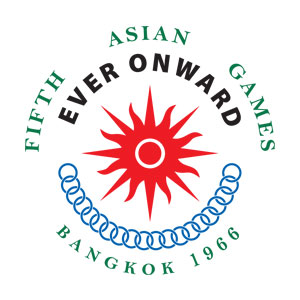
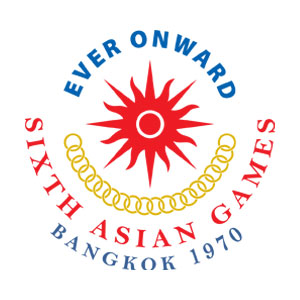
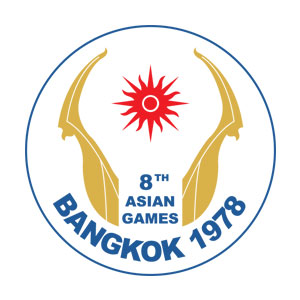


 Afghanistan
Afghanistan
 Armenien
Armenien
 Aserbaidschan
Aserbaidschan
 Asian Development Bank,ADB
Asian Development Bank,ADB
 Asian Development Bank,ADB
Asian Development Bank,ADB
 Kimimasa Tarumizu
Kimimasa Tarumizu
 Asian Development Bank,ADB
Asian Development Bank,ADB
 Haruhiko Kuroda
Haruhiko Kuroda
 Asian Development Bank,ADB
Asian Development Bank,ADB
 Masao Fujioka
Masao Fujioka
 Asian Development Bank,ADB
Asian Development Bank,ADB
 Masatsugu Asakawa
Masatsugu Asakawa
 Asian Development Bank,ADB
Asian Development Bank,ADB
 Mitsuo Sato
Mitsuo Sato
 Asian Development Bank,ADB
Asian Development Bank,ADB
 Shiro Inoue
Shiro Inoue
 Asian Development Bank,ADB
Asian Development Bank,ADB
 Tadao Chino
Tadao Chino
 Asian Development Bank,ADB
Asian Development Bank,ADB
 Takehiko Nakao
Takehiko Nakao
 Asian Development Bank,ADB
Asian Development Bank,ADB
 Takeshi Watanabe
Takeshi Watanabe
 Asian Development Bank,ADB
Asian Development Bank,ADB
 Taroichi Yoshida
Taroichi Yoshida
 Australien
Australien
 Bangladesh
Bangladesh
 Bhutan
Bhutan
 Brunei Darussalam
Brunei Darussalam
 China
China
 Dänemark
Dänemark
 Deutschland
Deutschland

 Europäische Union
Europäische Union

 Finanz
Finanz
 Internationale Bank für Zusammenarbeit
Internationale Bank für Zusammenarbeit
 Finnland
Finnland
 Frankreich
Frankreich
 Georgien
Georgien
 Hongkong Tebiexingzhengqu-HK
Hongkong Tebiexingzhengqu-HK
 Indien
Indien
 Indonesien
Indonesien
 Irland
Irland
 Italien
Italien
 Japan
Japan
 Kambodscha
Kambodscha
 Kanada
Kanada
 Kasachstan
Kasachstan
 Kirgisistan
Kirgisistan
 Laos
Laos
 Luxemburg
Luxemburg
 Malaysia
Malaysia

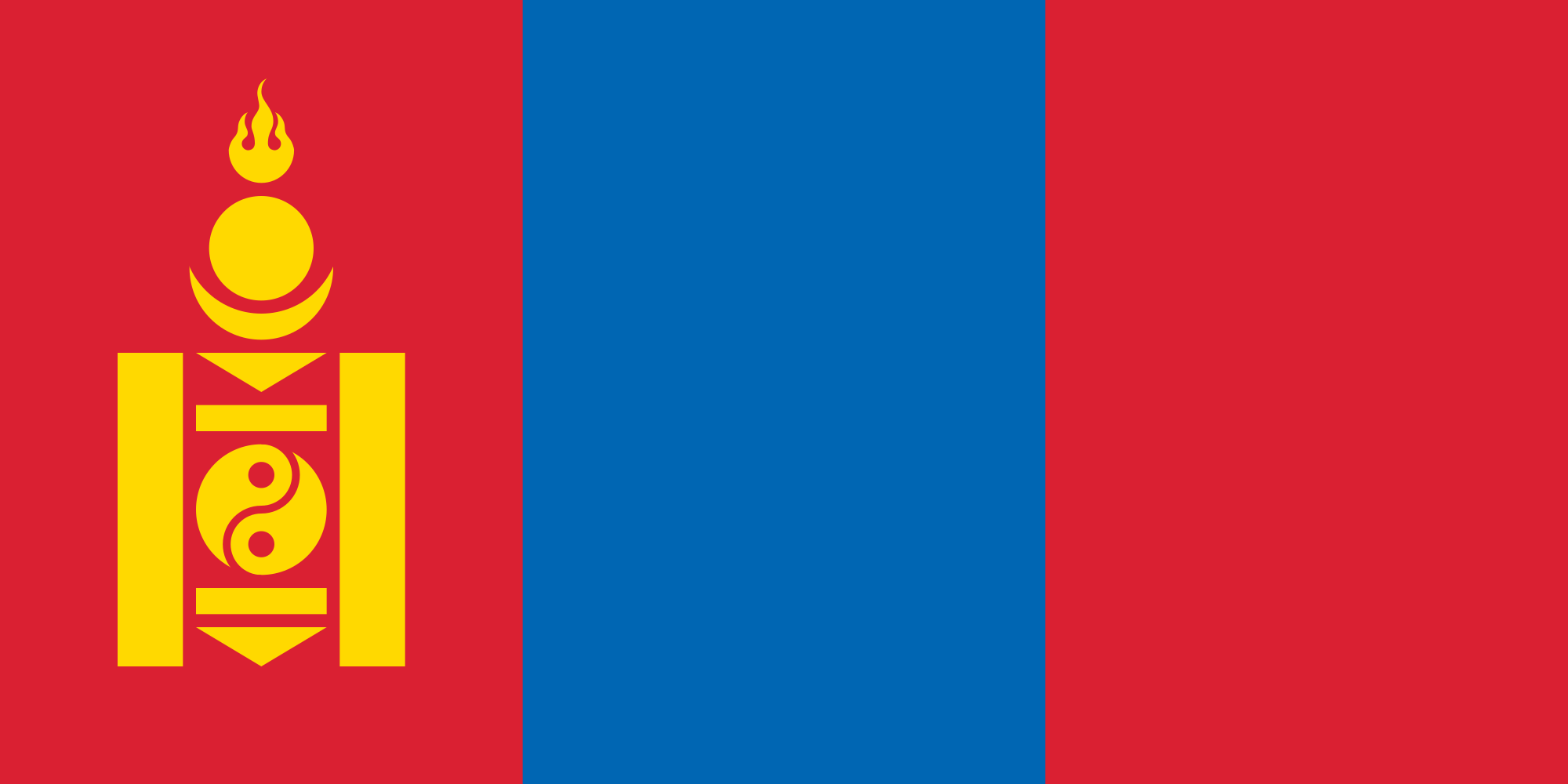 Mongolei
Mongolei
 Myanmar
Myanmar
 Nepal
Nepal
 Neuseeland
Neuseeland
 Niederlande
Niederlande
 Österreich
Österreich
 Pakistan
Pakistan
 Papua-Neuguinea
Papua-Neuguinea
 Philippinen
Philippinen
 Portugal
Portugal
 Republik Korea
Republik Korea
 Salomonen
Salomonen
 Schweden
Schweden
 Singapur
Singapur
 Sri Lanka
Sri Lanka
 Taiwan Sheng-TW
Taiwan Sheng-TW
 Takehiko Nakao
Takehiko Nakao
 Thailand
Thailand
 Tonga
Tonga
 Türkei
Türkei
 Turkmenistan
Turkmenistan
 Usbekistan
Usbekistan
 Vereinigte Staaten
Vereinigte Staaten
 Vereinigtes Königreich
Vereinigtes Königreich
 Vietnam
Vietnam

 Wichtige internationale Organisationen
Wichtige internationale Organisationen

 Wirtschaft und Handel
Wirtschaft und Handel
 Wirtschafts- und Politikforschung
Wirtschafts- und Politikforschung

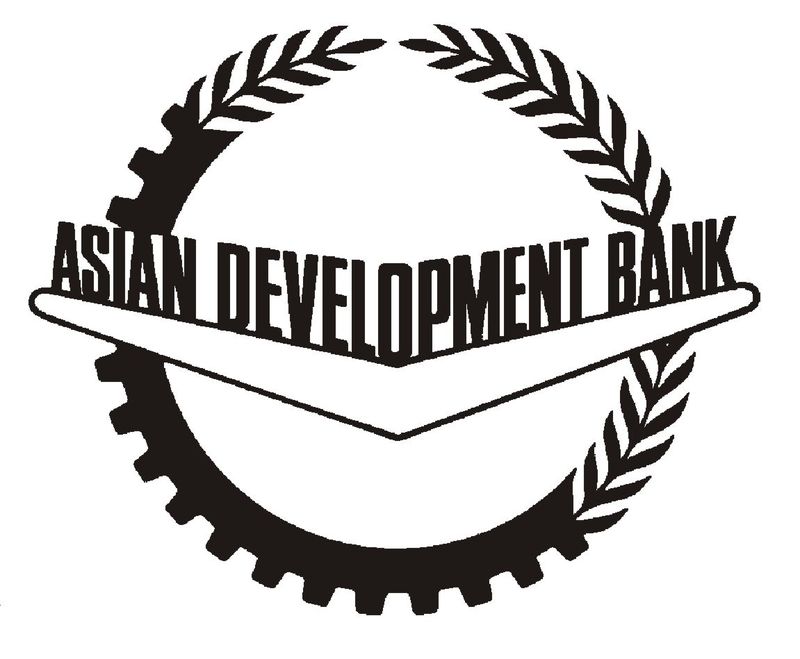
亚洲开发银行(英语:Asian Development Bank,缩写:ADB,简称亚银、亚行、亚开行),香港旧译亚洲发展银行,属于亚太地区的政府之间金融机构,其目的是为了促进亚洲经济与社会的发展。1966年12月19日成立,有31个创始会员国,目前有68个成员体,其中亚太有49个。总部设置于菲律宾马尼拉并在世界各地拥有31个办事处。亚洲开发银行仿照世界银行的股权制度,依照成员体的资本比例,得到相应比例的投票权。2014年以来,亚洲开发银行发布亚太创意生产指数年度报告。[3][4]亚洲开发银行为联合国观察员。
The Asian Development Bank (ADB) is a regional development bank established on 19 December 1966,[4] which is headquartered in the Ortigas Center located in the city of Mandaluyong, Metro Manila, Philippines. The company also maintains 31 field offices around the world[5] to promote social and economic development in Asia. The bank admits the members of the United Nations Economic and Social Commission for Asia and the Pacific (UNESCAP, formerly the Economic Commission for Asia and the Far East or ECAFE) and non-regional developed countries.[6] From 31 members at its establishment, ADB now has 68 members.
The ADB was modeled closely on the World Bank, and has a similar weighted voting system where votes are distributed in proportion with members' capital subscriptions. ADB releases an annual report that summarizes its operations, budget and other materials for review by the public.[7] The ADB-Japan Scholarship Program (ADB-JSP) enrolls about 300 students annually in academic institutions located in 10 countries within the Region. Upon completion of their study programs, scholars are expected to contribute to the economic and social development of their home countries.[8] ADB is an official United Nations Observer.[9]
El Banco Asiático de Desarrollo (BAsD) es una organización financiera para el desarrollo económico de Asia y el Pacífico. Su objetivo principal es la erradicación de la pobreza y facilitar ayudas para mejorar el nivel de vida de la población de la región a través de préstamos y colaboración técnica.
Creado en 1966 por 31 países. Hoy cuenta con 67 miembros (48 regionales y 19 no regionales). Estados Unidos y Japón son sus principales accionistas, con el 15,6% del capital cada uno.
El Banco tiene como su principal objetivo la lucha contra la pobreza. Para ello busca promover el crecimiento económico y la cooperación en la región de Asia-Pacífico, y acelerar el proceso de desarrollo económico de sus países miembros. Las dos terceras partes de personas pobres del mundo (aquellos que viven con menos de dos dólares diarios por persona), cerca de 1.800 millones de pobres, viven en esta región. El BAsD aprobó una nueva Estrategia a Largo Plazo (2008-2020) centrada en un crecimiento económico, medioambientalmente sostenible e integración regional.
Азиа́тский банк разви́тия (англ. Asian Development Bank) — банк, основанный в 1966 году, его главной задачей является стимулировать рост экономики в Азии и на Дальнем Востоке, направляя в эти регионы прямые займы и оказывая техническое содействие.
Штаб-квартира в Маниле (Филиппины). Президентом АБР с 28 апреля 2013 года является японец Такэхико Накао. 17 января 2020 года президентом станет Масацугу Асакава, избранный 2 декабря 2019 года[1].

 Afghanistan
Afghanistan
 Ägypten
Ägypten
 Armenien
Armenien
 Aserbaidschan
Aserbaidschan
 Äthiopien
Äthiopien
 Australien
Australien
 Bangladesh
Bangladesh
 Beijing Shi-BJ
Beijing Shi-BJ
 Brunei Darussalam
Brunei Darussalam
 China
China
 Dänemark
Dänemark
 Demokratische Republik Timor-Leste
Demokratische Republik Timor-Leste
 Deutschland
Deutschland
 Fidschi
Fidschi

 Finanz
Finanz
 Internationale Bank für Zusammenarbeit
Internationale Bank für Zusammenarbeit
 Finnland
Finnland
 Frankreich
Frankreich
 Georgien
Georgien
 Hongkong Tebiexingzhengqu-HK
Hongkong Tebiexingzhengqu-HK
 Indien
Indien
 Indonesien
Indonesien
 Iran
Iran
 Irland
Irland
 Island
Island
 Israel
Israel
 Italien
Italien
 Jordanien
Jordanien
 Kambodscha
Kambodscha
 Kasachstan
Kasachstan
 Katar
Katar
 Kirgisistan
Kirgisistan
 Laos
Laos
 Luxemburg
Luxemburg
 Malaysia
Malaysia
 Malediven
Malediven
 Malta
Malta

 Mongolei
Mongolei
 Myanmar
Myanmar
 Nepal
Nepal
 Neuseeland
Neuseeland
 Niederlande
Niederlande
 Norwegen
Norwegen
 Oman
Oman
 Österreich
Österreich
 Pakistan
Pakistan
 Philippinen
Philippinen
 Polen
Polen
 Portugal
Portugal
 Republik Korea
Republik Korea
 Russland
Russland
 Samoa
Samoa
 Saudi-Arabien
Saudi-Arabien
 Schweden
Schweden
 Schweiz
Schweiz
 Singapur
Singapur
 Spanien
Spanien
 Sri Lanka
Sri Lanka
 Südafrika
Südafrika
 Tadschikistan
Tadschikistan
 Thailand
Thailand
 Türkei
Türkei
 Ungarn
Ungarn
 Usbekistan
Usbekistan
 Vereinigte Arabische Emirate
Vereinigte Arabische Emirate
 Vereinigtes Königreich
Vereinigtes Königreich
 Vietnam
Vietnam

 Wichtige internationale Organisationen
Wichtige internationale Organisationen

 Wirtschaft und Handel
Wirtschaft und Handel
 Wirtschafts- und Politikforschung
Wirtschafts- und Politikforschung
 Zypern
Zypern

亚洲基础设施投资银行(英语:Asian Infrastructure Investment Bank,縮寫:AIIB),简称亚投行,是一个愿意向亚洲国家和地區的基础设施建设提供资金支持的政府间性质的亚洲区域多边开发机构,成立的目的是促进亚洲区域的互联互通建设和经济一体化的进程,並且加大中國與其他亚洲國家和地区的合作力度。总部设在中国北京,法定资本为1,000亿美元。[2]
中华人民共和国主席习近平于2013年10月2日在雅加达同印度尼西亚总统苏西洛举行会谈时首次倡议筹建亚投行。[3]2014年10月24日,中国、印度、新加坡等21国在北京正式签署《筹建亚投行备忘录》。[2]2014年11月25日,印度尼西亚签署备忘录,成为亚投行第22个意向创始成员国。[4]
2015年3月12日,英国正式申请作为意向创始成员国加入亚投行,[5]成为正式申请加入亚投行的首个欧洲国家、主要西方国家。[6]随后法国、意大利、德国等西方国家纷纷以意向创始成员国身份申请加入亚投行。[7]接收新意向创始成员国申请截止日期3月31日临近,韩国[8]、俄罗斯[9]、巴西[10]等域内国家和重要新兴经济体也抓紧申请成为亚投行意向创始成员国。
各方商定将于2015年年中完成亚投行章程谈判并签署,年底前完成章程生效程序,正式成立亚投行。[11]
Die Asiatische Infrastrukturinvestmentbank (亞洲基礎設施投資銀行 / 亚洲基础设施投资银行, kurz: 亞投行 / 亚投行, englisch Asian Infrastructure Investment Bank, AIIB) ist eine multilaterale Entwicklungsbank, die 2014 von verschiedenen Staaten gegründet wurde und im Wettbewerb zur Weltbank, zum Internationalen Währungsfonds und zur Asiatischen Entwicklungsbank steht.
Anlass zur Initiative der Gründung war insbesondere die Unzufriedenheit Chinas über eine Dominanz der US-Amerikaner im Internationalen Währungsfonds, der keine faire Verteilung der globalen Machtverhältnisse aus Sicht Chinas widerspiegelte.[2] Da sich die US-Amerikaner strikt weigerten, eine Änderung der Stimmverhältnisse zu implementieren, begann China 2013 mit der Gründung der Initiative. Neben den 21 Gründungsmitgliedern haben im Jahr 2015 auch unter anderem Deutschland, Italien, Frankreich und das Vereinigte Königreich ihr Interesse bekundet, als nicht-regionale Mitglieder die neue Entwicklungsbank zu unterstützen.[3]
Die Gründungsurkunde der AIIB wurde am 29. Juni 2015 von Vertretern aus 57 Ländern in Peking unterzeichnet.[4] Die Bank nahm im Januar 2016 ihre Arbeit ohne Beteiligung der USA und Japan auf.[5]
Joachim von Amsberg ist der "Vizepräsident für Politik und Strategie".
アジアインフラ投資銀行(アジアインフラとうしぎんこう、英: Asian Infrastructure Investment Bank, AIIB、中: 亚洲基础设施投资银行,亞洲基礎設施投資銀行)は、国際開発金融機関のひとつである。
中華人民共和国が2013年秋に提唱し主導する形で発足した[1]。「合計の出資比率が50%以上となる10以上の国が国内手続きを終える」としていた設立協定が発効条件を満たし、2015年12月25日に発足し[2][3]、2016年1月16日に開業式典を行った[1][4]。
57か国を創設メンバーとして発足し[1][5]、2017年3月23日に加盟国は70カ国・地域となってアジア開発銀行の67カ国・地域を超え[6][7]、一方で日本、アメリカ合衆国などは2017年の現時点で参加を見送っている[8]。 創設時の資本金は1000億ドルである[9]。
The Asian Infrastructure Investment Bank (AIIB) is a multilateral development bank that aims to support the building of infrastructure in the Asia-Pacific region. The bank currently has 93 members from around the world [7]. The bank started operation after the agreement entered into force on 25 December 2015, after ratifications were received from 10 member states holding a total number of 50% of the initial subscriptions of the Authorized Capital Stock.[8]
The United Nations has addressed the launch of AIIB as having potential for "scaling up financing for sustainable development"[9] and to improve the global economic governance.[10] The starting capital of the bank was $100 billion, equivalent to 2⁄3 of the capital of the Asian Development Bank and about half that of the World Bank.[11]
The bank was proposed by China in 2013[12] and the initiative was launched at a ceremony in Beijing in October 2014.[13] It received the highest credit ratings from the three biggest rating agencies in the world, and is seen as a potential rival to the World Bank and IMF.[14][15]
La Banque asiatique d'investissement dans les infrastructures (BAII ou AIIB), est une banque d'investissement proposée par la République populaire de Chine dans le but de concurrencer le Fonds monétaire international, la Banque mondiale et la Banque asiatique de développement1 pour répondre au besoin croissant d'infrastructures en Asie du Sud-Est et en Asie centrale. Cette banque s'inscrit dans la stratégie de la nouvelle route de la soie, développée par la Chine.
La Banca Asiatica d'Investimento per le infrastrutture (AIIB), fondata a Pechino nell'ottobre 2014, è un'istituzione finanziaria internazionale proposta dalla Repubblica Popolare Cinese. Si contrappone al Fondo Monetario Internazionale, alla Banca Mondiale e all'Asian Development Bank[1], le quali si trovano sotto il controllo del capitale e delle scelte strategiche dei paesi sviluppati come gli Stati Uniti d'America.[2] Scopo della Banca è fornire e sviluppare progetti di infrastrutture nella regione Asia-Pacifico attraverso la promozione dello sviluppo economico-sociale della regione e contribuendo alla crescita mondiale.
El Banco Asiático de Inversión en Infraestructura (Asian Infrastructure Investment Bank o AIIB) es una institución financiera internacional propuesta por el gobierno de China. El propósito de este banco de desarrollo multilateral es proporcionar la financiación para proyectos de infraestructura en la región de Asia basado en un sistema financiero de préstamo1 y el fomento del sistema de libre mercado en los países asiáticos.
El AIIB está considerado por algunos como una versión continental del FMI y del Banco Mundial, y busca ser un rival por la influencia en la región del Banco de Desarrollo asiático (ADB), el cual esta alineado a los intereses de potencias, tanto regionales (Japón), como globales (Estados Unidos, la Unión Europea).2
El banco fue propuesto por Xi Jinping en 2013 e inaugurado con una ceremonia en Pekín en octubre de 2014. La ONU se a mostrado entusiasta con la propuesta china, a la que a descrito como el FMI del futuro y a señalado como "una gran propuesta para financiar el desarrollo sostenible" y "mejorar la gobernanza económica mundial". La entidad constó inicialmente con 100 mil millones de dolares, es decir, la mitad del dinero de que posee el Banco Mundial.
La entidad a recibido inversión por parte de corporaciones financieras estadounidenses como la Standard & Poor's, Moody's o Fitch Group34. Actualmente la entidad consta de 87 miembros, incluyendo los 57 miembros fundadores. Bélgica, Canadá, y Ucrania están barajando unirse al AIIB. Estados Unidos, Japón y Colombia no tienen intención de participar. China a prohibido a Corea del Norte unirse, instigando además una política de aislamiento contra esta por parte del AIIB.
Азиатский банк инфраструктурных инвестиций (АБИИ) (англ. Asian Infrastructure Investment Bank, AIIB) — международная финансовая организация, создание которой было предложено Китаем. Основные цели, которые преследует АБИИ, — стимулирование финансового сотрудничества в Азиатско-Тихоокеанском регионе, финансирование инфраструктурных проектов в Азии от строительства дорог и аэропортов до антенн связи и жилья экономкласса[1].
По заявлениям вице-премьера России Игоря Шувалова, AБИИ не рассматривается как потенциальный конкурент МВФ, Всемирного банка и Азиатского банка развития (АБР). Однако эксперты рассматривают AIIB как потенциального конкурента базирующихся в США Международного валютного фонда (МВФ) и Всемирного банка. После сообщений об успехах AIIB американский министр финансов США Джейкоб Лью предупредил, что международным финансовым организациям в США, таким как ВБ и МВФ, грозит потеря доверия [2][3].
Китай, Индия и Россия возглавили организацию, оказавшись в тройке крупнейших владельцев голосов. При этом на важнейшие решения КНР имеет фактическое право вето[4].
 Beijing Shi-BJ
Beijing Shi-BJ
 China
China
 China
China
 Chūgoku
Chūgoku
 Guangdong Sheng-GD
Guangdong Sheng-GD
 Indien
Indien
 Indonesien
Indonesien
 Iran
Iran
 Japan
Japan
 Japan
Japan
 Kantō
Kantō
 Katar
Katar
 National Capital Territory
National Capital Territory
 Republik Korea
Republik Korea
 Republik Korea
Republik Korea
 Republik Korea
Republik Korea
 Thailand
Thailand
 Thailand
Thailand
 Thailand
Thailand
 Thailand
Thailand

亚洲运动会(简称亚运会、亚运;英语:Asian Games,简写:Asiad)是亚洲的综合性运动会,为国际奥委会承认的地区性大型综合运动会,由亚洲奥林匹克理事会(亚奥理事会)主办,每4年一届。
Die Asienspiele (englisch Asian Games), auch Panasiatische Spiele genannt, sind sportliche Wettkämpfe asiatischer Staaten mit olympischem Charakter.
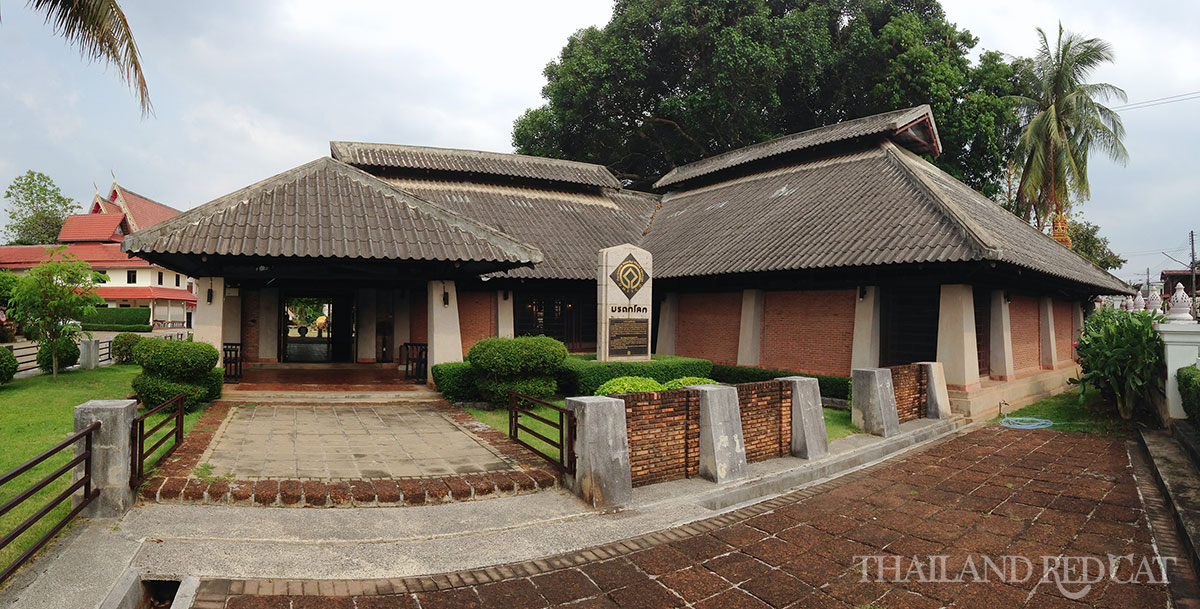



曼谷(法语:Bangkok),官方名字功特玛哈那空[2](泰语:กรุงเทพมหานคร,转写:krung deːb mahaː nagara,皇家拉丁音译:Krung Thep Maha Nakhon,国际音标:[krūŋ tʰêːp mahǎː nákʰɔ̄ːn] 聆听 帮助·信息),泰国口语简称功特[2](泰语:กรุงเทพ,皇家拉丁音译:Krung Thep,国际音标:[krūŋ tʰêːp],
聆听 帮助·信息),泰国口语简称功特[2](泰语:กรุงเทพ,皇家拉丁音译:Krung Thep,国际音标:[krūŋ tʰêːp], 聆听 帮助·信息),是泰国首都与最大城市,在当地华人社区亦作泰京,为泰国政治、经济、贸易、交通、文化、科技、教育与各方面中心。位于昭披耶河东岸,近泰国湾。
聆听 帮助·信息),是泰国首都与最大城市,在当地华人社区亦作泰京,为泰国政治、经济、贸易、交通、文化、科技、教育与各方面中心。位于昭披耶河东岸,近泰国湾。
Bangkok (thailändisch กรุงเทพมหานคร, Krung Thep Maha Nakhon, [kruŋ tʰêːp máʔhǎː náʔkʰɔːn],  anhören?/i; kurz กรุงเทพฯ, Krung Thep, [kruŋ tʰêːp]; historische Schreibung zum Teil auch Bankok[2]) ist seit 1782 die Hauptstadt des Königreichs Thailand. Sie hat einen Sonderverwaltungsstatus und wird von einem Gouverneur regiert. Die Hauptstadt hat 8,249 Millionen Einwohner (Volkszählung 2010) und ist die mit Abstand größte Stadt des Landes. In der Bangkok Metropolitan Region (BMR), der größten Metropolregion in Thailand, leben insgesamt 14,566 Millionen Menschen (Volkszählung 2010).[1]
anhören?/i; kurz กรุงเทพฯ, Krung Thep, [kruŋ tʰêːp]; historische Schreibung zum Teil auch Bankok[2]) ist seit 1782 die Hauptstadt des Königreichs Thailand. Sie hat einen Sonderverwaltungsstatus und wird von einem Gouverneur regiert. Die Hauptstadt hat 8,249 Millionen Einwohner (Volkszählung 2010) und ist die mit Abstand größte Stadt des Landes. In der Bangkok Metropolitan Region (BMR), der größten Metropolregion in Thailand, leben insgesamt 14,566 Millionen Menschen (Volkszählung 2010).[1]
Die Stadt ist das politische, wirtschaftliche und kulturelle Zentrum Thailands mit Universitäten, Hochschulen, Palästen und über 400 Wats (buddhistische Tempelanlagen und Klöster) sowie wichtigster Verkehrsknotenpunkt des Landes. In Bangkok ist auch die Wirtschafts- und Sozialkommission für Asien und den Pazifik (UNESCAP) beheimatet. Mit mehr als 17 Millionen ausländischen Touristen war Bangkok im Jahr 2013 die meistbesuchte Stadt der Welt, bevor sie 2014 wieder von London abgelöst wurde und seither auf Platz 2 rangiert.[3] Seit 2016 steht Bangkok mit über 20 Millionen Touristen jährlich auf Platz 1 der meistbesuchten Städte der Welt.
バンコク都(バンコクと、フランス語: Bangkok,[bāːŋ kɔ̀ːk], 聴く[ヘルプ/ファイル])正式名称クルンテープマハーナコーン(กรุงเทพมหานคร,[krūŋ tʰêːp mahǎː nákʰɔ̄ːn])は[1]、タイ王国の首都。タイでは、クルンテープ(กรุงเทพ,[krūŋ tʰêːp],
聴く[ヘルプ/ファイル])正式名称クルンテープマハーナコーン(กรุงเทพมหานคร,[krūŋ tʰêːp mahǎː nákʰɔ̄ːn])は[1]、タイ王国の首都。タイでは、クルンテープ(กรุงเทพ,[krūŋ tʰêːp], 聴く[ヘルプ/ファイル])の通称で呼ばれている[2]。
聴く[ヘルプ/ファイル])の通称で呼ばれている[2]。
人口8,249,117人(2010年)、面積1568.737 km2。都市圏人口は2018年時点で1600万人を超えており、世界有数の大都市圏を形成している[3]。ASEAN経済の中心地で、東南アジア屈指の世界都市でもある。
タイの王宮や政治の中枢機関が集中しているだけでなく、交通と宿泊施設の整ったバンコクは多くの各国要人を招き、アジアで2番目に多くの国際会議が開かれる都市であり[4]、政治的に多大な影響力を持つ。
Bangkok,[a] officially known in Thai as Krung Thep Maha Nakhon[b] and colloquially as Krung Thep,[c] is the capital and most populous city of Thailand. The city occupies 1,568.7 square kilometres (605.7 sq mi) in the Chao Phraya River delta in central Thailand and has an estimated population of 10.539 million as of 2020, 15.3 percent of the country's population. Over 14 million people (22.2 percent) lived within the surrounding Bangkok Metropolitan Region at the 2010 census, making Bangkok an extreme primate city, dwarfing Thailand's other urban centres in both size and importance to the national economy.
Bangkok traces its roots to a small trading post during the Ayutthaya Kingdom in the 15th century, which eventually grew and became the site of two capital cities, Thonburi in 1768 and Rattanakosin in 1782. Bangkok was at the heart of the modernization of Siam, later renamed Thailand, during the late-19th century, as the country faced pressures from the West. The city was at the centre of Thailand's political struggles throughout the 20th century, as the country abolished absolute monarchy, adopted constitutional rule, and underwent numerous coups and several uprisings. The city, incorporated as a special administrative area under the Bangkok Metropolitan Administration in 1972, grew rapidly during the 1960s through the 1980s and now exerts a significant impact on Thailand's politics, economy, education, media and modern society.
The Asian investment boom in the 1980s and 1990s led many multinational corporations to locate their regional headquarters in Bangkok. The city is now a regional force in finance and business. It is an international hub for transport and health care, and has emerged as a centre for the arts, fashion, and entertainment. The city is known for its street life and cultural landmarks, as well as its red-light districts. The Grand Palace and Buddhist temples including Wat Arun and Wat Pho stand in contrast with other tourist attractions such as the nightlife scenes of Khaosan Road and Patpong. Bangkok is among the world's top tourist destinations, and has been named the world's most visited city consistently in several international rankings.
Bangkok's rapid growth coupled with little urban planning has resulted in a haphazard cityscape and inadequate infrastructure. Despite an extensive expressway network, an inadequate road network and substantial private car usage have led to chronic and crippling traffic congestion, which caused severe air pollution in the 1990s. The city has since turned to public transport in an attempt to solve the problem, operating five rapid transit lines and building other public transit, but congestion still remains a prevalent issue. The city faces long-term environmental threats such as sea level rise due to climate change.
Bangkok (thaï : กรุงเทพมหานคร, Krungthep Mahanakhon) est la capitale de la Thaïlande. La ville a également le statut de province.
La ville occupe une superficie de 1 569 km2 dans le delta du fleuve Chao Phraya en Thaïlande centrale et son nombre d’habitants est supérieur à 9 millions, plus de 19 millions de personnes habitent l’aire métropolitaine de la capitale, soit plus que tous les autres centres urbains du pays.
Les racines de Bangkok remontent à un petit comptoir commercial créé durant le Royaume d’Ayutthaya au xve siècle au bord du fleuve Chao Phraya qui prend de l’importance avant de devenir le site d’une première capitale, Thonburi, en 1768. Mais la date officielle de sa fondation par Rama Ier, premier roi de la dynastie Chakri, est le 6 avril 1782, sur l’autre rive du fleuve. Bangkok s’inscrit au xixe siècle au cœur du mouvement de modernisation du royaume de Siam, alors que le pays subit la pression des nations colonisatrices européennes. La ville est ensuite au xxe siècle le théâtre de l’évolution politique de la Thaïlande, notamment avec l’abolition de la monarchie absolue, l’adoption d’une constitution, et plusieurs soubresauts politiques parfois violents. La ville a connu une formidable croissance à partir des années 1960 et exerce aujourd’hui une influence centrale sur la vie politique, économique, culturelle, universitaire et médiatique de la Thaïlande1.
Le boom économique asiatique des années 1980 et 1990 a amené beaucoup d’entreprises multinationales à installer leur siège régional à Bangkok. La ville est un important pôle d’affaires. C’est également une plateforme internationale pour les transports et la santé, tout comme pour les arts, la mode, les spectacles et le tourisme. Bangkok fait partie des villes les plus visitées au monde.
Bangkok (in thailandese: บางกอก?), in thai ufficialmente denominata Krung Thep Maha Nakhon o Krung Thep (in thailandese: กรุงเทพมหานคร?, กรุงเทพฯ; pronuncia[?·info]), è la capitale e la città più estesa e popolosa della Thailandia, situata lungo il fiume Chao Phraya, nei pressi del golfo della Thailandia. Secondo il censimento del 2010, aveva una popolazione di oltre 8,3 milioni di abitanti, pari al 12,6% del totale del paese, mentre erano oltre 14,6 milioni (22,2%) quelli che vivevano nella regione metropolitana, che comprende anche le province circostanti.[1] Tra le città più popolose e trafficate del mondo,[2] nonché una delle destinazioni preferite del turismo mondiale, a partire dalla seconda metà del XX secolo ha conosciuto un rapidissimo sviluppo industriale, rappresentando una delle città economicamente più dinamiche del sud-est asiatico.
Bangkok u oficialmente Krung Thep Mahanakhon ([bāːŋ kɔ̀ːk] en tailandés, กรุงเทพมหานคร o กรุงเทพ  [krūŋ tʰêːp mahǎː nákʰɔ̄ːn] (?·i), RTGS: Krung Thep Mahanakhon traducido como «La ciudad de los ángeles»)1 es la capital y ciudad principal de Tailandia.2 Aunque el nombre oficial de la capital no es Bangkok, es comúnmente empleado internacionalmente para referirse a la ciudad.3
[krūŋ tʰêːp mahǎː nákʰɔ̄ːn] (?·i), RTGS: Krung Thep Mahanakhon traducido como «La ciudad de los ángeles»)1 es la capital y ciudad principal de Tailandia.2 Aunque el nombre oficial de la capital no es Bangkok, es comúnmente empleado internacionalmente para referirse a la ciudad.3
Bangkok significa «aldea de la ciruela silvestre» y es el nombre de una parte del lado del río Thon Buri. Así pues, Bangkok es conocida como Krung Thep Mahanakhon. Fue un pequeño puesto de comercio en la desembocadura del río Chao Phraya durante el reino de Ayutthaya. Llegó al primer plano de Siam, cuando recibió el estatus de ciudad capital en 1768 después de la quema de Ayutthaya.4 Sin embargo el actual reino Rattanakosin no comenzó hasta 1782 cuando Rama I trasladó la capital a la isla de Rattanakosin, después de la muerte del rey Taksin. La capital de Rattanakosin es ahora formalmente llamada "Phra Nakhon" (en tailandés: พระนคร), perteneciente a los antiguos límites en el núcleo de la metrópolis y el nombre de Bangkok incorpora la acumulación urbana desde el siglo XVIII, con su propia administración pública y gobernador.
Durante los últimos doscientos años Bangkok ha crecido hasta llegar a ser el centro político, social y económico de Tailandia ampliando su pujanza hacia Indochina y el Sudeste asiático. Su influencia en el arte, la política, moda, educación y entretenimiento, así como en los negocios, le ha proporcionado a Bangkok el estatus de ciudad global. En 2016, según un informe elaborado por MasterCard, fue reconocida como la ciudad más visitada por turistas extranjeros con 21,47 millones superando a Londres.5
La ciudad tenía una población de alrededor de 8.5 millones de habitantes, mientras que el área de gran Bangkok posee 11.971.000 habitantes (a enero de 2008).6 Esto, a su vez, ha cambiado el país ya que ha pasado de ser una población tailandesa homogénea a una heterogénea donde se incluye ciudadanos de procedencia occidental, con grupos de India o China, otorgando a la ciudad un estatus cosmopolita.
Бангко́к[6], в Таиланде используется название Крунгте́п[7] (тайск. กรุงเทพฯ, Крунгтхеп[8], или กรุงเทพมหานคร, Крунг Тхеп Маха Накхон[9]) — столица и самый крупный город Таиланда с населением 5,6 млн чел. (2011). Имя, данное городу при основании, попало в Книгу рекордов Гиннесса как самое длинное название города в мире. Бангкок раскинулся на восточном берегу реки Чаупхраи, недалеко от её впадения в Сиамский залив.
Один из наиболее быстрорастущих (в том числе экономически) городов Юго-Восточной Азии. Занимает площадь свыше 1,5 тыс. км². Местные жители считают свой город зарождающимся новым региональным центром, способным соперничать с такими городами, как Сингапур и Гонконг. Бангкок является также одним из наиболее привлекательных для туристов городов мира[10].
Столичный округ и пять соседних провинций (Нонтхабури, Самутпракан, Патхумтхани, Самутсакхон и Накхонпатхом) образуют агломерацию Большой Бангкок.

 IT-Times
IT-Times
 Sport
Sport
 Weltkulturerbe
Weltkulturerbe
 Internationale Städte
Internationale Städte
 Geschichte
Geschichte
 Wichtiger Hafen
Wichtiger Hafen